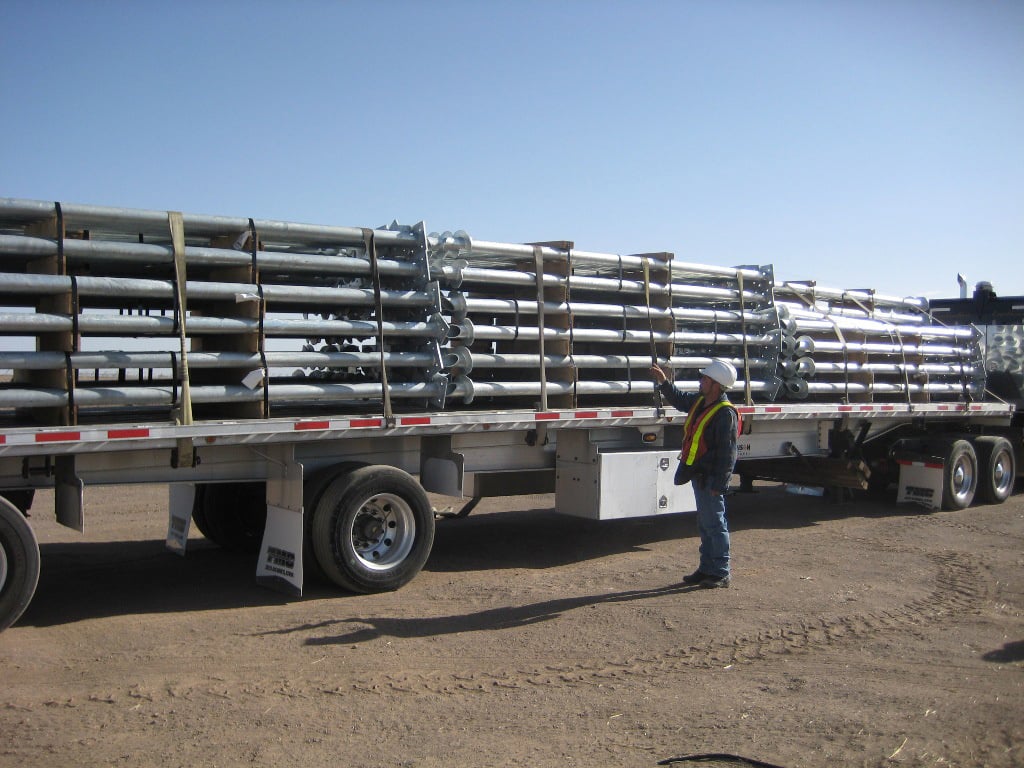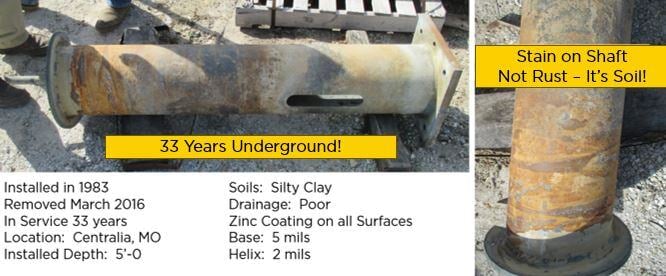December 2024 Update - Read more about Scope 3 emissions from the Deep Foundations Institute!
Environmental sustainability is our ongoing, long-term commitment to minimize, and even eliminate, the negative impact our products and manufacturing processes have on the planet.
As a company, Hubbell, manufacturer of Chance products, established enterprise-wide climate, water, and waste goals in 2022 including:
- Reduce Scope 1 & 2 emissions by 30% by 2030
- Reduce water usage by 25% by 2030
- Reduce hazardous waste by 30% by 2030
Throughout the course of conducting our day-to-day business we are keenly aware of how the construction industry affects human life. Shelter is provided for those who need it. Roadways and bridges allow us to move freely from one point to the next. Historical structures at risk of collapse are restored to their original splendor. Renewable energy facilities offer new options for power providers.
Unfortunately, we also bear witness to the environmental consequences inherent to the construction industry. Ecosystems are often destroyed or displaced. Air quality is compromised by emissions from trucks and earth-moving equipment. Contaminated soils are frequently disturbed, releasing toxins into the biosphere.
Learn more about why Chance helical piles are an excellent choice for green building, including LEED-certified projects.
Improved Manufacturing Methods
The following speak to the environmental considerations of the design and manufacturing of the Chance helical pile products:
- We have converted continuously operating gas-fired furnaces to an on-demand induction heating process, reducing carbon emissions.
- Products are manufactured using low-impact recycled materials, avoiding those which damage human health, ecological health, and those which deplete resources.
- More efficient engineering uses minimal materials by looking at redesigns that can result in taking material out of the product without negatively affecting its capacity or functionality.
- Our Midwest-based factories practice optimized manufacturing, designing for ease of production and quality control, while also minimizing the number of production methods, operations, and the number of components in a product.
Our distribution warehouse is located a half a mile from our manufacturing facilities. From there we strive to ship out full truckloads to our distribution network to minimize the number of trucks on the road and fuel burned. Helical piles have lower mobilization costs compared to other deep foundation technologies and can be installed with smaller equipment.

Chance products have a long product life and optimized end-of-life. Since our products are steel, the components can be re-used or easily recycled.
Because of superior performance and ease of installation, Chance promotes the use of square shaft (SS) helical piles. The solid-steel square shaft tends to be more “green” than the hollow round pipe-shaft because of the way the shaft is made. All square-shaft steel is sourced from mini-mills which use scrap to charge their melt shops. The recycled content of square shaft is nearly 100%. Chance sources all of its square shaft steel from mills in the Midwest, which means fewer C02 emissions are created to get the raw material to the manufacturing facility in Centralia, Missouri.
The helices on square and pipe shaft products are made from slit coil steel which can be scrap based. Products are galvanized for corrosion protection (meaning longer life) with zinc, a natural mineral.
Chance Helical Piles Compared to Other Foundation Types
All Chance products are removable and reusable. Not only is this helpful if an obstruction is encountered and a pile needs to be relocated, but it’s an excellent option for temporary structures because the site can return to its original state. Piles are simply attached to the torque motor and reversed out of the ground. Concrete, treated timber piles and other piling systems are generally abandoned when a site is no longer in use.
The pile in this picture had been in the ground for 33 years when it was removed. The brown stains aren’t rust – they are soil. Except for a small spot on the helix, the foundation was in such good condition that it could meet the ASTM galvanization spec to be resold! 👇

Helical piles cause minimal disturbance to the soil during installation. Therefore, contaminated soils do not need to be removed to create a high capacity, deep foundation system. Check out this case study about a hotel that was constructed over an old railway line. The creosote-laden soil had created a brownfield and by utilizing helical piles, the hazardous materials were kept safely under the clean fill on top. 👇

Speaking of spoils, many foundation types require excavating soil and hauling it off. Helical pile installation eliminates the emission-producing removal of spoils from the site via the machinery required for loading and transporting.
Because of the manufacturing techniques and low mobilization costs, installing Chance products eliminates the C02 emissions associated with the production of concrete. Concrete production is responsible for as much as 10% of C02 emissions, worldwide. For large installations, using a Chance piling system eliminates the need to build a concrete batch facility. Unlike concrete, helicals do not require the use of water, a critical and threatened resource.
Get in touch with your local support team
All of our products are stocked and shipped from your closest local distributor, who makes sure you have what you need when you need it. Contact them for help with quotes, engineering, or installation.

